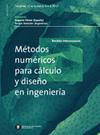离散元法在自定心系统梁柱连接仿真中的应用。
IF 0.4
4区 工程技术
Q4 ENGINEERING, MULTIDISCIPLINARY
Revista Internacional de Metodos Numericos para Calculo y Diseno en Ingenieria
Pub Date : 2023-01-01
DOI:10.23967/j.rimni.2023.06.005
引用次数: 0
摘要
目前,通过自定心后张连接的梁柱连接体系是目前改善钢筋混凝土建筑抗震性能的一种替代方案;通过允许其元素在面对地震作用产生的位移时具有线性行为(不损坏)。本文提出了基于离散元法(MED)的自定心连接抗震性能的数值模拟方法,目的是通过文献试验验证数值模型的滞回反应。结果表明柱中的水平变形,这是模型在4种不同刚度系数下随时间增加的载荷的数值模拟的产物。此外,模型的数值模拟结果显示了滞回图,具有足够的刚度系数和法向阻尼,受到作为时间函数的反向循环荷载的影响。连接的运动由柱的水平变形控制,实现了这种类型连接中预期的歇斯底里行为的近似再现。结果表明,本文提出了一种简单的双线性迟滞律,简化了其在钢筋混凝土自定心连接建筑物建模中的应用。本文章由计算机程序翻译,如有差异,请以英文原文为准。
Application of the Discrete Elements Method for the simulation of a beam-column connection based on a self-centering system.
At present, the beam-column connection system through a self-centering post-tensioned connection is currently an alternative to improve the seismic behavior in reinforced concrete buildings; by allowing its elements to have a linear behavior (no damage) in the face of displacements produced by seismic actions. This paper deals with the numerical modeling of the seismic behavior for a self-centering connection based on the Discrete Element Method (MED) is presented, with the aim of validating the hysterical response of the numerical model with an experimental test of the literature. The results demonstrated the horizontal distortions in the column, which are the product of the numerical simulation of the model subjected to a load that increases over time with 4 different stiffness coefficients. In addition, the hysteretic graph is presented as a result of the numerical simulation of the model, with an adequate stiffness coefficient and normal damping, subject to a cyclic load that is reversed as a function of time. The movement of the connection is controlled by the horizontal distortions of the column, achieving an approximate reproduction of the hysterical behavior expected in this type of connection. With the results shown, a simple bilinear hysteresis law is proposed, which allows its simplified use for its application in the modeling of reinforced concrete buildings with self-centering connections.
求助全文
通过发布文献求助,成功后即可免费获取论文全文。
去求助
来源期刊
CiteScore
0.70
自引率
0.00%
发文量
26
审稿时长
6 months
期刊介绍:
International Journal of Numerical Methods for Calculation and Design in Engineering (RIMNI) contributes to the spread of theoretical advances and practical applications of numerical methods in engineering and other applied sciences. RIMNI publishes articles written in Spanish, Portuguese and English. The scope of the journal includes mathematical and numerical models of engineering problems, development and application of numerical methods, advances in software, computer design innovations, educational aspects of numerical methods, etc. RIMNI is an essential source of information for scientifics and engineers in numerical methods theory and applications. RIMNI contributes to the interdisciplinar exchange and thus shortens the distance between theoretical developments and practical applications.

 求助内容:
求助内容: 应助结果提醒方式:
应助结果提醒方式:


